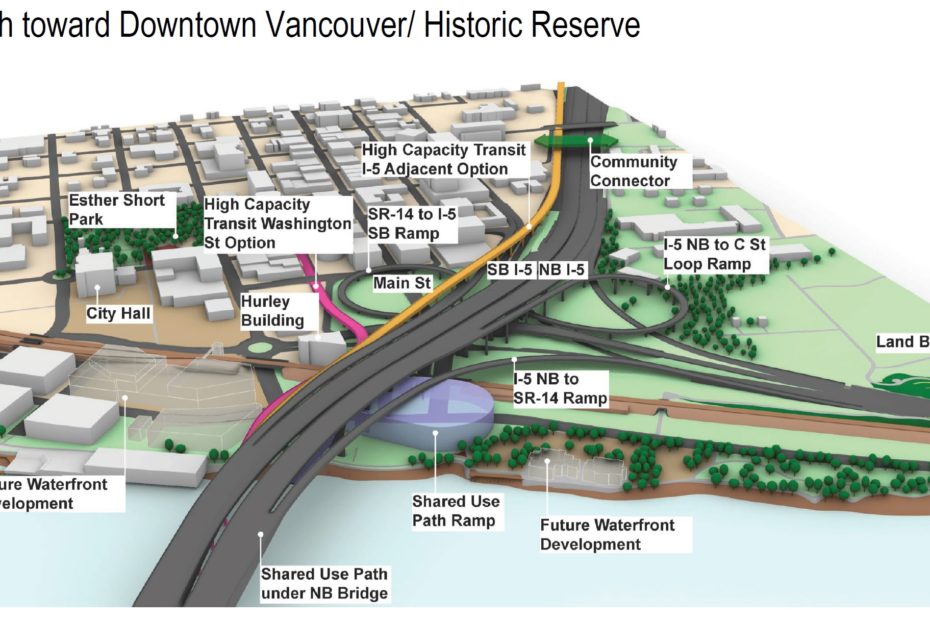The cost and scale of “the IBR Solution” are one of the chief concerns of our Alliance. Like its predecessor project (the “CRC” – Columbia River Crossing) this recommended Locally Preferred Alternative (LPA) is based on a “high bridge” design, that is, a bridge that goes over the shipping channel, rather than requiring a lift span.
The other ways to deal with the shipping channel, which is regulated by the Coast Guard, who will have to issue a permit for this project, would be a low bridge with a lift span (like today’s bridge), or a tunnel.
There were several low bridge alternatives evaluated a decade ago as part of the CRC, including “supplemental” bridges that would have run alongside seismically upgraded existing bridges. There were several tunnel concepts evaluated as well, but curiously these looked at tunnels between Marine Drive and Vancouver, going under Hayden Island. There were no tunnels reviewed that simply replaced the existing span over the Columbia.
Why is this important? Because selection of the high bridge option is a huge driver in project cost. The Coast Guard permit for the CRC required 116 feet of vertical clearance over the shipping channel and that’s the spec used for the LPA. In order to keep grades on the bridge low enough for trucks, the bridge has to start rising at Marine Driver and doesn’t come back to grade until well into Vancouver. That’s a huge structure!
And don’t forget that we have to have enormous structures in the river to keep the roadway stable – 116 feet up in the air – in an earthquake.
The project is still sticking to its cost range of $3.2B to $4.8B, but watch carefully what happens to those numbers as we move into environmental review. A much smaller bridge in Oregon City just came in 40% ($120M) over budget when actual construction bids came back!
